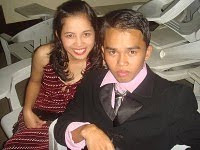Eudoxus was born in Cnidos at the year 408 B.C. He studied geometry and medicine, and became a pupil of Plato at the age of twenty-three. After learning Pythagorean astronomy at the newly founded academy, he traveled to Egypt where he remained for some time. There he found the opportunity to supplement by his own observations (at an observatory near Heliopolis) the already extensive material that he secured from Egyptian astronomers. The geometric interpretation of celestial motions devised by Eudoxus is called the "theory of homocentric spheres". By this theory, he attempted to account for all the peculiarities in the apparent paths of celestial bodies, and particularly for the "loops" in the sidereal motion of planets.
Eudoxus retained the Pythagorean principles of a static earth and of uniformly circular celestial motions. However, since the apparent orbits of planets depart appreciably from a circle, he attempted to explain these vagaries as combinations of circular motions. He devised then the "theory of concentric spheres" giving, thus, a rational explanation of what may be happening. Within the accuracy of observation available in his day, Eudoxus' theory gave a satisfactory account of the apparent motions of Venus, Mars, Jupiter and Saturn with the possible exception of Mars. This planet's orbit, being somewhat more elliptical than those of Jupiter and Saturn, lent itself less readily to a description in terms of circular motions. Eudoxus' system of homocentric spheres gained wide acceptance. In the ensuing centuries, this original system was modified gradually by the introduction of new data and the increasing accuracy of observations. It was adopted by Aristotle without essential alterations and was superseded only by the theories of Hipparchus in the second century B.C.
AristotleAristotle and Plato at The Peripatetic School of Athens (Painting by Raphael)
EuclidThe Great Orion (US Naval Observatory)
Greek Asto Vaticanmebula
Ptolemy's Astrolabe
Pythagoras
RETURN TO MAIN PAGE
© 2000 George Pararas-Carayannis
The realization of truth is more difficult than its discovery.
Subscribe to:
Post Comments (Atom)

No comments:
Post a Comment